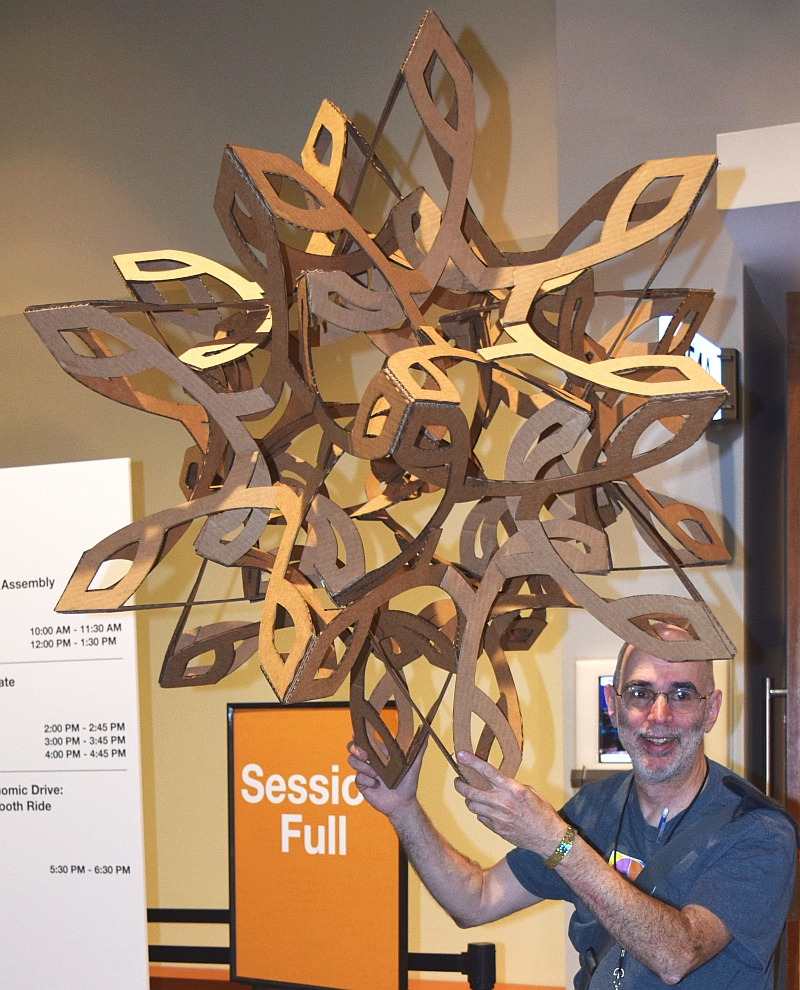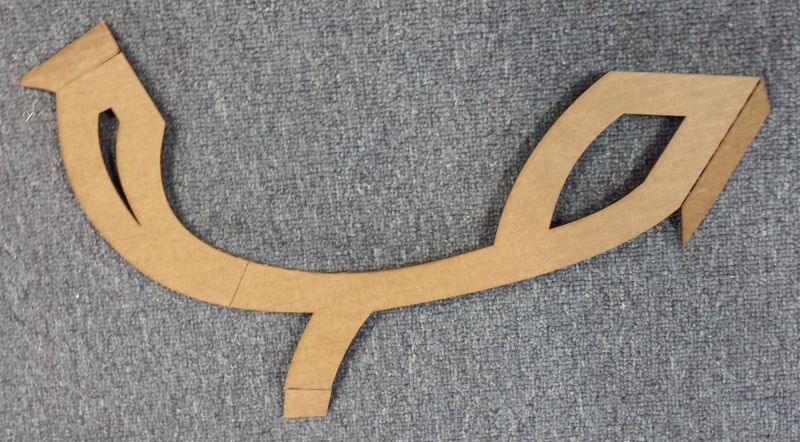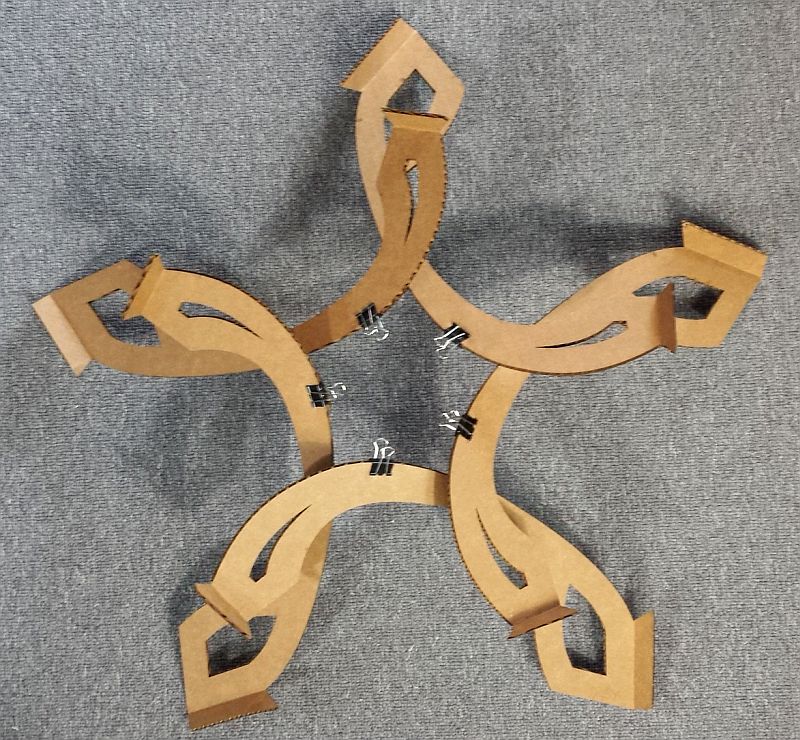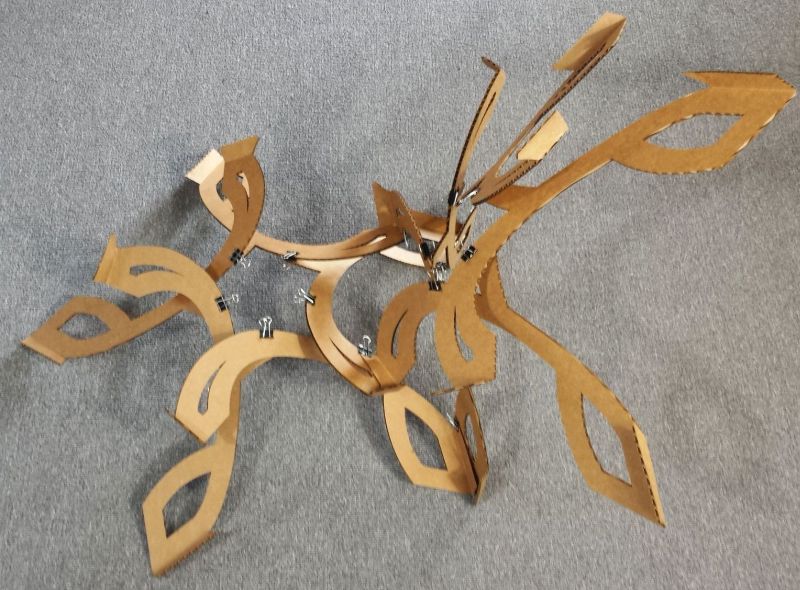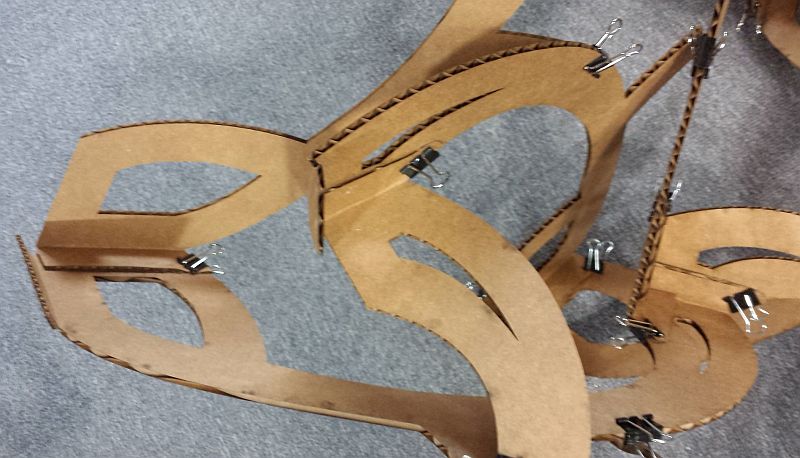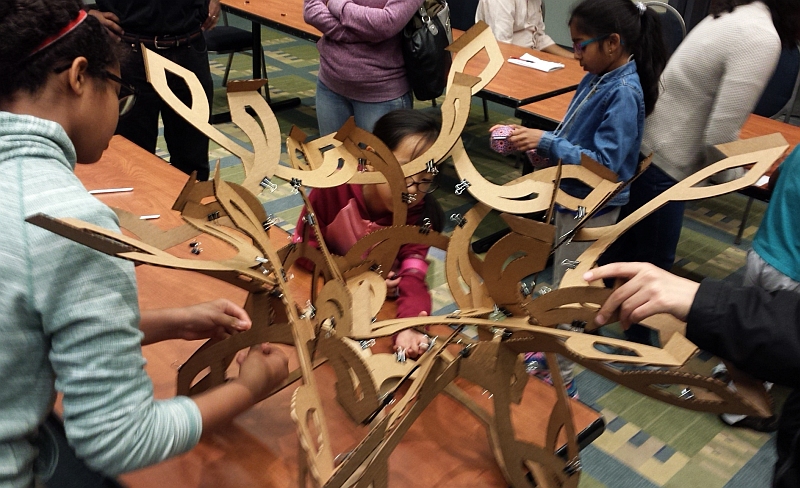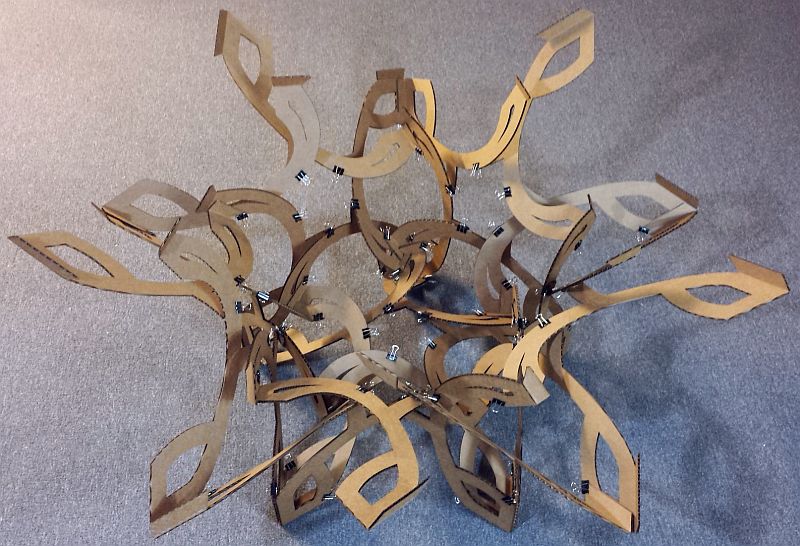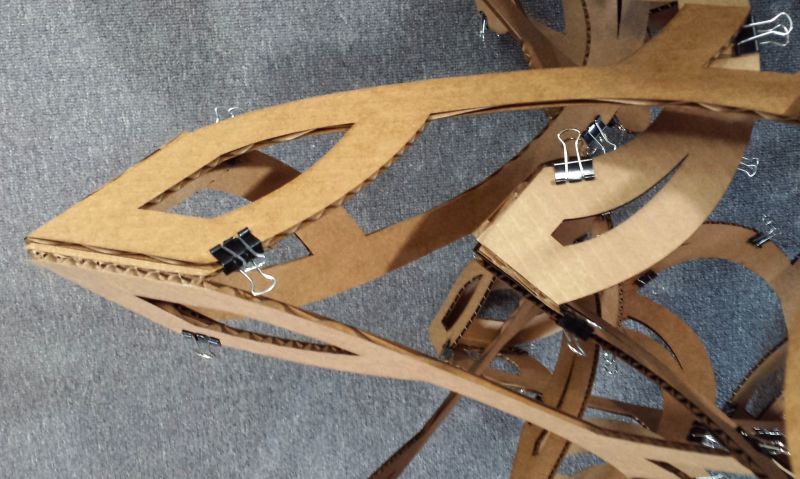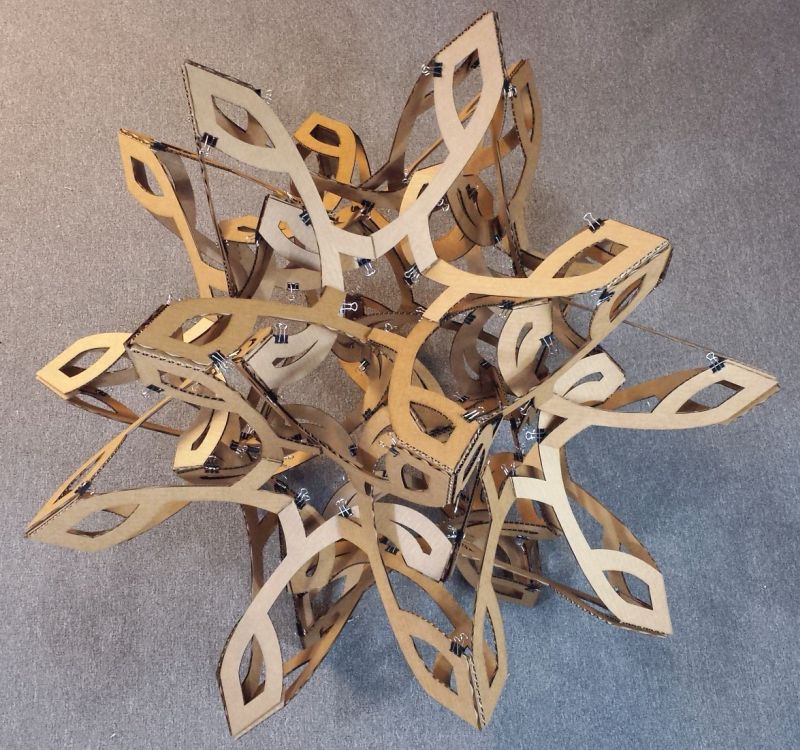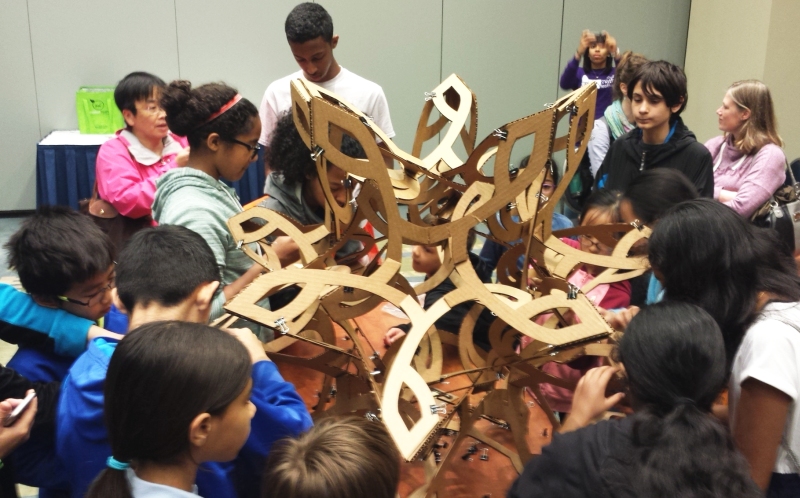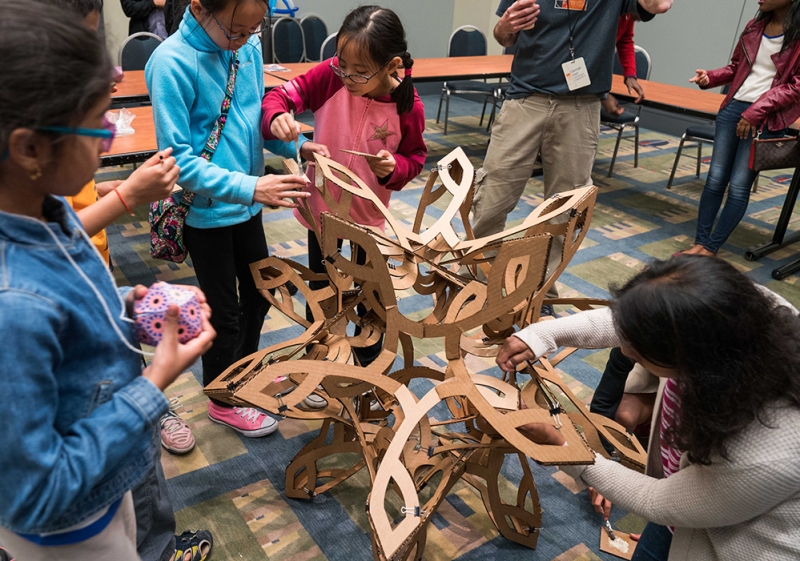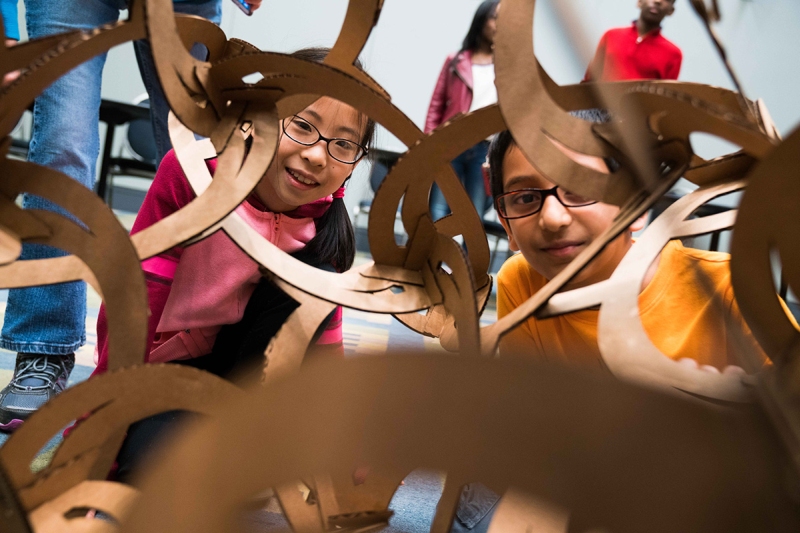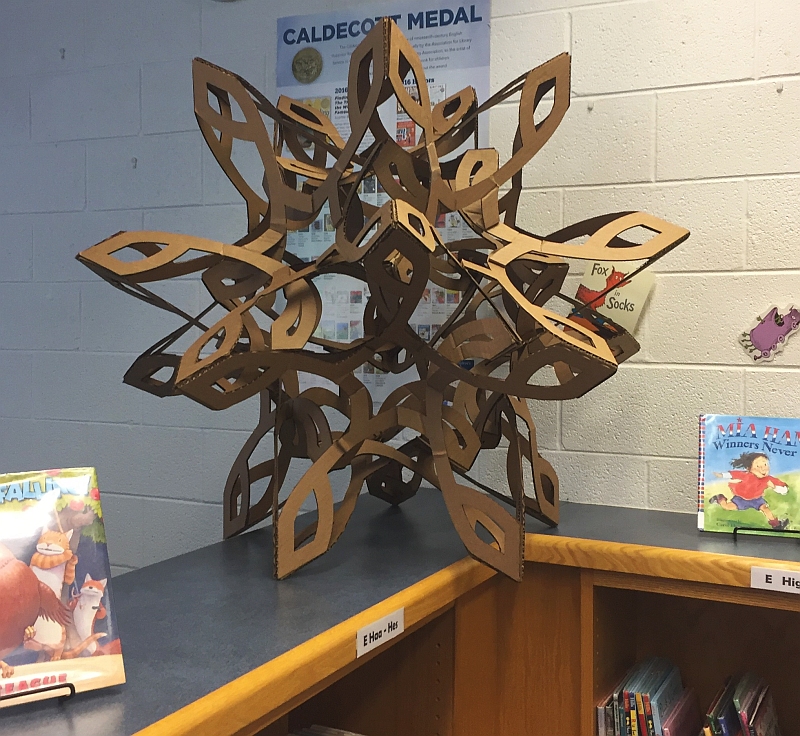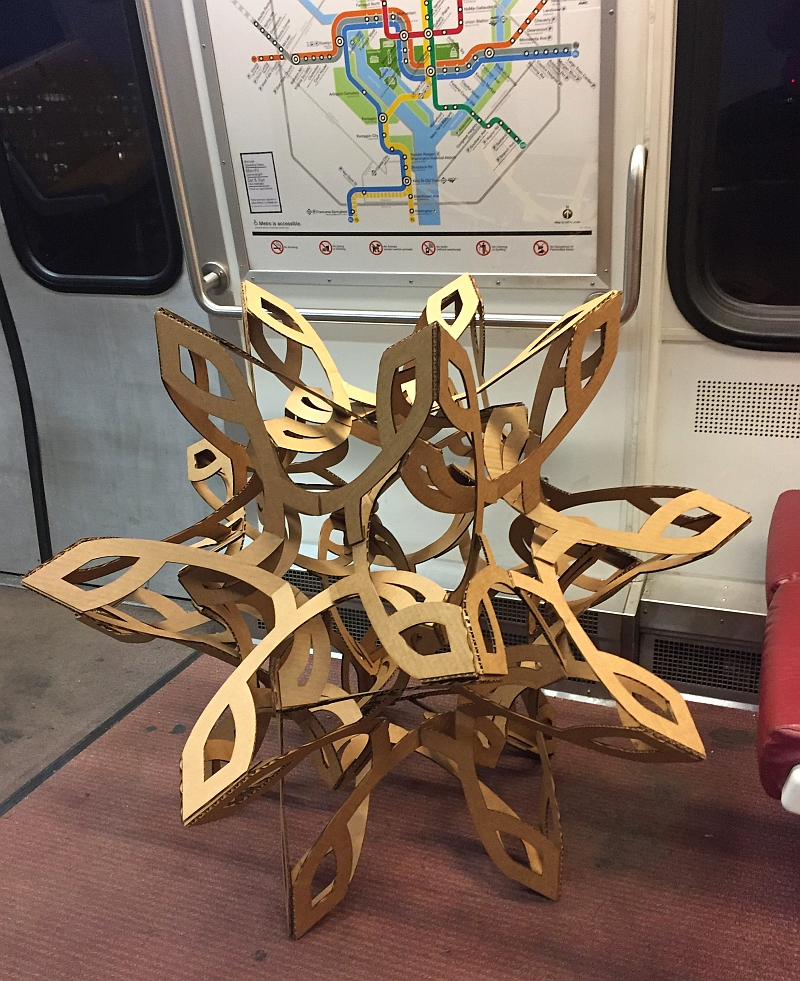This is half the dodecahedron.
You will complete the three-way joints of
the five lower points that touch the floor.
10. In the same way, make a second "bowl" of five modules around
one. This can be done in parallel in a separate part of
the room.
11. Place the second bowl on top of the first one. You may
have to rotate it a bit to find the position where all the
remaining parts connect. Join all the cardboard flaps,
tucking them in to be hidden on the inside, before clamping
them.
12. Ask students to remove three clamps at a time, at one
three-fold joint, brush glue on the flaps, and replace the
clamps. One handle on the clamp can be folded flat as a mark
that the corner has been glued. Students can work from all
sides, locating any unmarked corners that need glue to work
on.
It is easier to keep track of things if you first do the outer
twenty vertices, then do the inner twenty. It is
physically easiest to work just on the top half, then turn it
over to do the other half.
13. After the glue dries (typically 15 minutes) the clamps can
be removed.
14. Display the completed construction somewhere very
visible. (You could hang it by a string from one of its
corners. Or take it for a ride on the Metro...)

